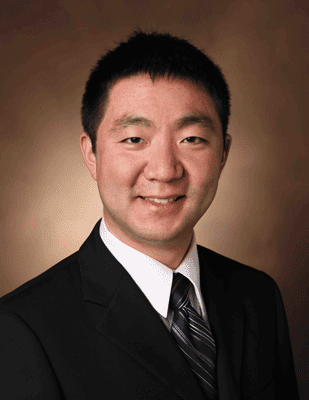Alex Cheng, a research assistant professor at Vanderbilt University Medical Center, is working to determine the overall burden on patients of breast cancer treatment. With that information, he hopes patients can better choose what care is right for them and their circumstances.
Dr. Cheng recently updated us on his Susan G. Komen-funded big data research projects. The COVID-19 pandemic presented challenges, but also an opportunity to understand breast cancer treatment delays from data.

Q: What does the term ‘big data’ mean in your breast cancer research?
A: For me, big data is about learning. By studying data from a large number of patients, future generations of patients can learn from the experiences of current breast cancer patients to improve treatment going forward.
Q: And what is your big data project focused on?
A: It is a project to describe breast cancer treatment burden for patients over time. We are measuring the impact of all the tasks patients face. These include getting care, such as surgery, chemotherapy, radiation, other outpatient procedures, visits to a primary care physician, and visits to specialists for comorbidities. Patients also have to manage out-of-pocket financial costs, outpatient medications, and commuting to and from medical centers. All these contribute to a patient’s treatment burden.
Our research will better prepare patients for the disruptions treatment may have on their lives after their breast cancer diagnosis. Significant differences in burden have already been shown by cancer stage, subtype, and treatment. Thus, we hope to give patients personalized estimates for treatment burden based on their disease and personal situation. This will help them know how much time they should expect to devote for their care. We want to reduce surprises down the road about the magnitude of the work a patient faces in getting their care.
Q: What data did you need for this project?
A: We started the project by looking at the electronic health records (EHR) of patients being treated at Vanderbilt-Ingram Cancer Center over an 18-month time period. Local EHR data allowed us to estimate more precisely how far patients were traveling and the duration of their appointments. But the limitation was we could only calculate treatment burden for care given at Vanderbilt.
We have broadened our approach by using a national dataset, called SEER-Medicare. This dataset links patients’ data from SEER cancer registries and Medicare claims data. SEER is a population-based registry which means we are getting all cancer patients in a geographic area, rather than from just one medical center. The primary benefit of using SEER-Medicare for our study is it has claims data for nearly all encounters for Medicare-covered patients wherever they received care. The main drawback of using SEER-Medicare is that there are very few patients under the age of 65. We also cannot see the addresses of the facilities where they got their care or how long the care took, like in the EHR data. Stay tuned! We will be publishing these findings soon.
Q: How do you think patient care will change if patients know how much time they should expect to spend to get their care and their overall burden?
A: More information can improve the decision-making process for patients, their doctors, and their caregivers. More patients with breast cancer are surviving and living longer. Quality of life and disruptions to daily living are a growing concern for patients and their families.
When a patient wonders, “Which option is better for me, a lumpectomy and radiation or a mastectomy?” The options have different burdens or impacts on a patient’s life. Their treatment burden should not be a surprise. It needs to be part of what patients consider to make the best decision for them based on their personal needs and situation. A patient’s constraints and what they want to achieve need to be part of deciding what is the best course of care for them.
Q: Has the COVID-19 pandemic interrupted any of your research? If so, how did you overcome that?
A: We planned to start a trial to study treatment burden and patients’ capacity to manage breast cancer care in April 2020. We were going to recruit patients starting treatment for breast cancer to assess their treatment burden over time. That trial was shut down due to the pandemic. But thankfully, Komen agreed to redirect the funding to start a different big data project to measure the pandemic’s impact on treatment delays for breast cancer from cancer registry data.
Early on in the pandemic, many hospitals postponed elective surgeries, including some breast cancer surgeries. There will likely be disruptions to breast cancer treatment in the future due to another pandemic or disruption. Having information about how restrictions in response to the COVID-19 pandemic impacted treatment delays will help inform how hospitals and public health officials design and enact future policies impacting cancer care.



